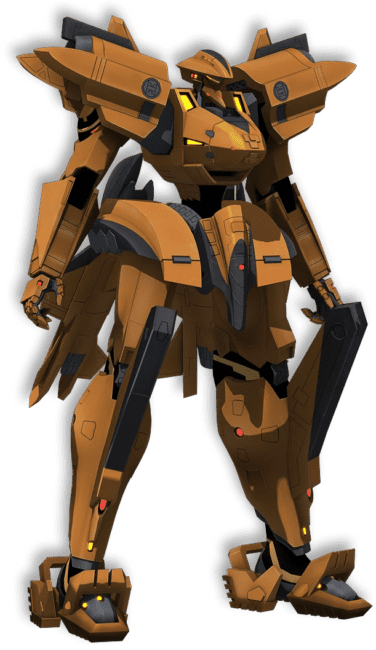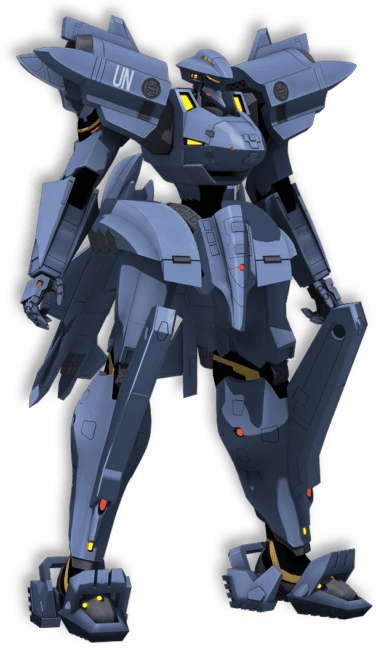
Mecha Profile: F-16 Fighting Falcon – Muv-Luv Alternative
The United States is no doubt the most advanced country in terms of TSF Development, as they are manufacturing and delivering humanity’s swords and shields to the frontline of the BETA War. However, everything has a cost, and the staggering procurement expense of the TSF are endangering the world, so a new TSF was born – cheaper but still high-spec – the F-16 Fighting Falcon.

I. Development History:
– In the 1980s, as the war against the BETA is still raging with humanity being pushed back day-by-day, the U.S managed to introduced the 2nd-generation TSF with much higher combat abilities compared to the previus generation. The F-14 Tomcat and F-15 Eagle were praised as masterpieces that might end the war. However, due to their high procurement cost, the national defense budget was under extreme pressure, which led to interruptions in planned procurement numbers. The US Army and the Pentagon took this issue seriously as they were aiming to bolster their anti-BETA force. Hence, the “High-Low Mix” inititative was introduced.
– The Initiative aim to restructure the TSF force to include a high number of lightweight and cheaper units, in addition with a few selected heavy and high-spec, high-cost units. They also supported the LWTSF (Lightweight TSF) Program. And the result of the program is the F-16 Fighting Falcon manufactured by General Dynomics. The F-16 defeated the YF-17 Cobra in the program, however, the Cobra would soon go on to become the F-18 Hornet and adopted by the Navy.
– The F-16 is widely used throughout the world, with many different local variations, as the Falcon is a small frame TSF, therefore there are less space to upgrade equipment. After deployment, General Dynomics developed a prototype successor – the F-16XL – for the Dual-Role TSF Program to cover for the lack of F-22 Raptor supply. To compensate for the base F-16 weakness, its airframe and jump unit were both enlarged, however, the F-15E Strike Eagle was chosen instead.
– In 1991, General Dynomics sold off most of its TSF development department to Lockweed Mardin. And by 2000, Lockweed Mardin has taken over manufacturing the F-16.
– In the 1980s, as the war against the BETA is still raging with humanity being pushed back day-by-day, the U.S managed to introduced the 2nd-generation TSF with much higher combat abilities compared to the previus generation. The F-14 Tomcat and F-15 Eagle were praised as masterpieces that might end the war. However, due to their high procurement cost, the national defense budget was under extreme pressure, which led to interruptions in planned procurement numbers. The US Army and the Pentagon took this issue seriously as they were aiming to bolster their anti-BETA force. Hence, the “High-Low Mix” inititative was introduced.
– The Initiative aim to restructure the TSF force to include a high number of lightweight and cheaper units, in addition with a few selected heavy and high-spec, high-cost units. They also supported the LWTSF (Lightweight TSF) Program. And the result of the program is the F-16 Fighting Falcon manufactured by General Dynomics. The F-16 defeated the YF-17 Cobra in the program, however, the Cobra would soon go on to become the F-18 Hornet and adopted by the Navy.
– The F-16 is widely used throughout the world, with many different local variations, as the Falcon is a small frame TSF, therefore there are less space to upgrade equipment. After deployment, General Dynomics developed a prototype successor – the F-16XL – for the Dual-Role TSF Program to cover for the lack of F-22 Raptor supply. To compensate for the base F-16 weakness, its airframe and jump unit were both enlarged, however, the F-15E Strike Eagle was chosen instead.
– In 1991, General Dynomics sold off most of its TSF development department to Lockweed Mardin. And by 2000, Lockweed Mardin has taken over manufacturing the F-16.
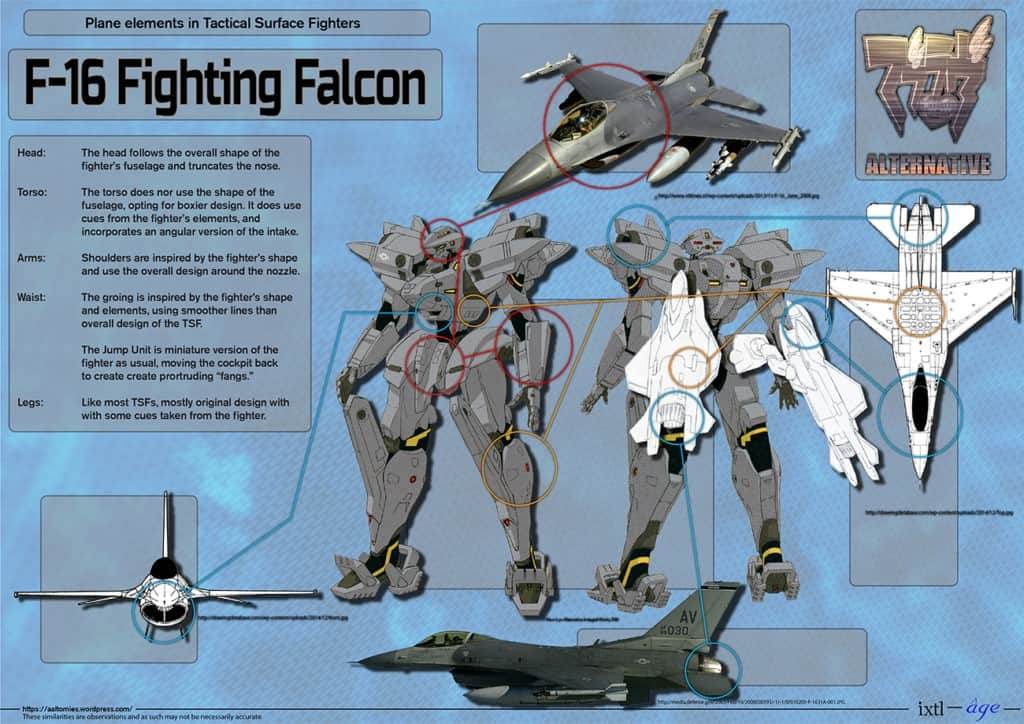
II. Technical Specs & Armaments:
– The F-16 Fighting Falcon stand at 17.3-meter tall, utilizing two FE100-PW-100 Jump Units. The F-16 is designed with high affordability in mind, so they sacrificed upgradability and operation time, but still managed to retain the high specification of a 2nd-gen machine. It had adopted many innovative technologies across many of its parts and demonstrated extremely high mobility and manoeuvrability in combat.
– The F-14 is a relatively small unit, therefore there isn’t a lot of free design space for modifications. This led to local variants looking very different from the base model, as they have to completely redesign its components. However, since Upgrade Block 52/D, the Fighting Falcon’s shoulder block armor and lower legs have been enlarged to increase durability and operational time.
– Even though it lost out to the F-15E Strike Eagle in the DRTSF Program, the F-16XL development data was used to develop the F-35 Lightning II- the latest 3rd-generation TSF of the U.S.
– The F-16 should use standard equipment of their respective army. For the US, it’s the WS-16 Assault Cannon and later on the AMWS-21 Combat System. It also retain the knee-block knife sheath mechanism like the F-15 although a bit different.
III. Variation:
The F-16 has many local variants, but they all have very distinct changes and upgrades that most of them are like an entirely different craft, such as the Israeli and Chinese’s TSF.
– YF-16: The original prototype of the F-16 that won against the YF-17 Cobra. This craft is nicknamed “Viper”.
– F-16A/AM Fighting Falcon: The first production batch of the Falcon is the F-16A. The F-16AM is a variant used by the Benelux Union (a Union between Belgium, Netherlands and Luxembourg). While visually identical, the AM has improved fire control, data processing and electronic warfare equipment.
– F-16C Fighting Falcon: An upgraded F-16A with the new F110-GE-100 Jump Units.
– F-16D: also known as Block 52 upgrade, this variant has enlarged shoulder blocks and lower legs to improve operational time (by increasing fuel storage).
– F-16XL: a prototype submitted to the DRTSF Program along with McDaell’s F-15C. Even though it lost, the development data was used in creating the F-35 Lightning II.
– F-16A/AM Fighting Falcon: The first production batch of the Falcon is the F-16A. The F-16AM is a variant used by the Benelux Union (a Union between Belgium, Netherlands and Luxembourg). While visually identical, the AM has improved fire control, data processing and electronic warfare equipment.
– F-16C Fighting Falcon: An upgraded F-16A with the new F110-GE-100 Jump Units.
– F-16D: also known as Block 52 upgrade, this variant has enlarged shoulder blocks and lower legs to improve operational time (by increasing fuel storage).
– F-16XL: a prototype submitted to the DRTSF Program along with McDaell’s F-15C. Even though it lost, the development data was used in creating the F-35 Lightning II.
IV. Gallery:
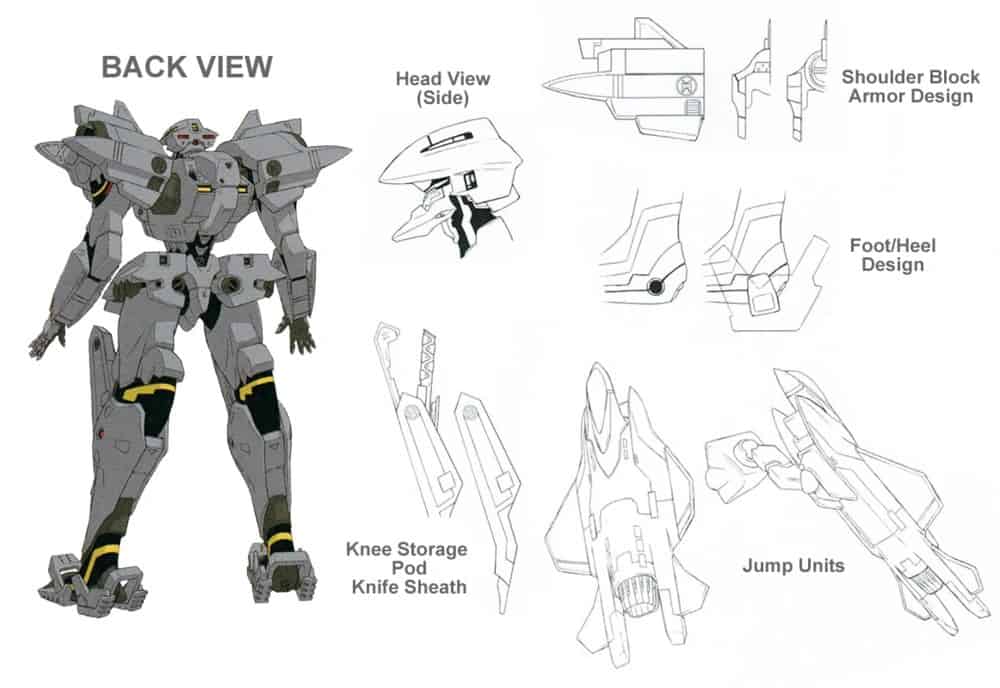
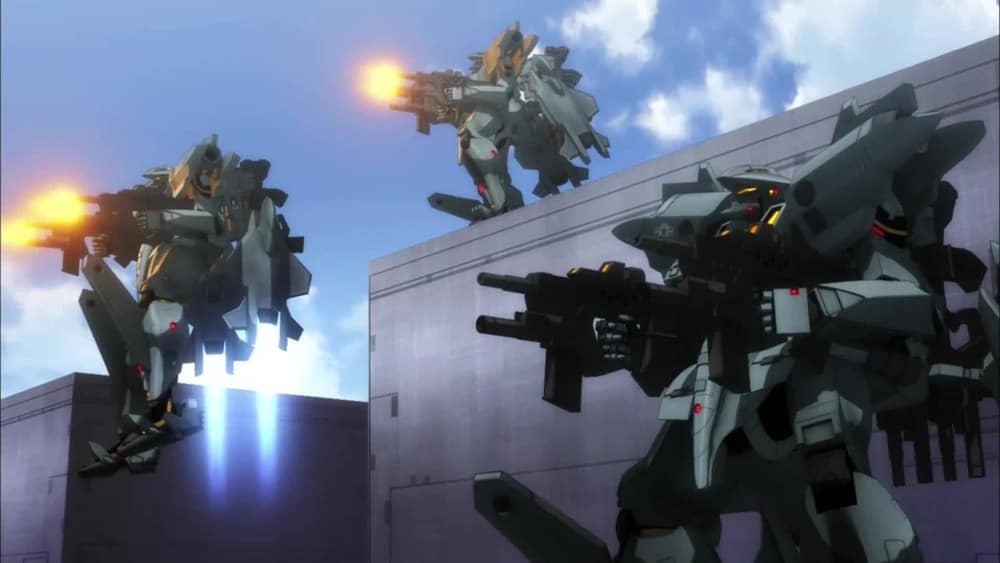
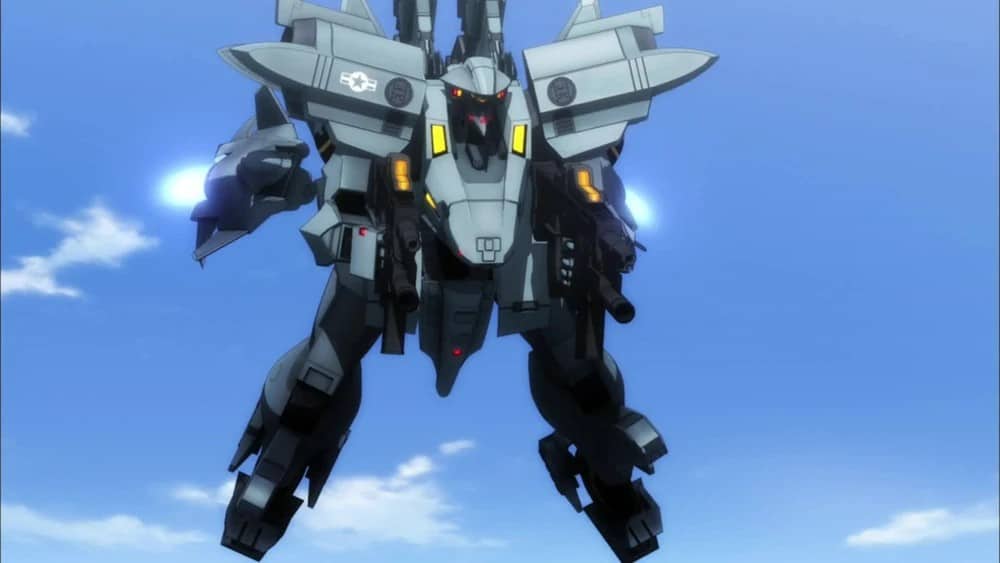




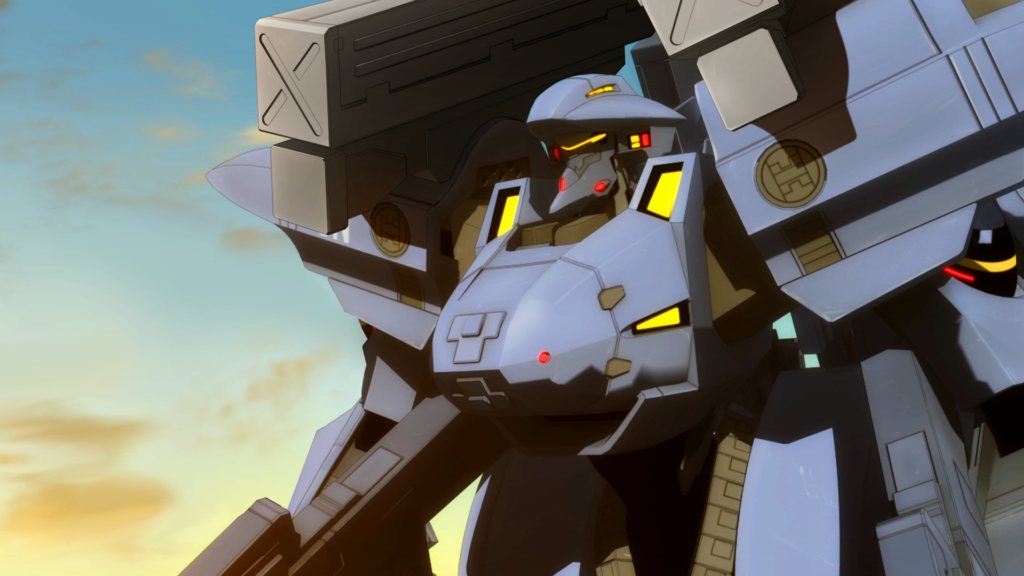

Mecha Profile: Aquarion Gepard – Aquarion EVOL
The 3rd form of the Aquarion EVOL is a walking artillery of destruction – literally. The Aquarion Gepard has enough firepower to even shoot through dimensions.

Mecha Profile: Aquarion Spada- Aquarion EVOL
The unbeatable melody of the sword – Aquarion Spada is Evol’s 2nd form. With a strong resemblance to a swordsman, the Spada is a key element in unlocking the myths of 12,000 years.

Mecha Profile: Aquarion EVOL – Aquarion EVOL
After 12.000 years, the Mechanical Angel awakens once again. Fighting for the love that span millennia, the Aquarion EVOL once again unlocks the past that was sealed within.

